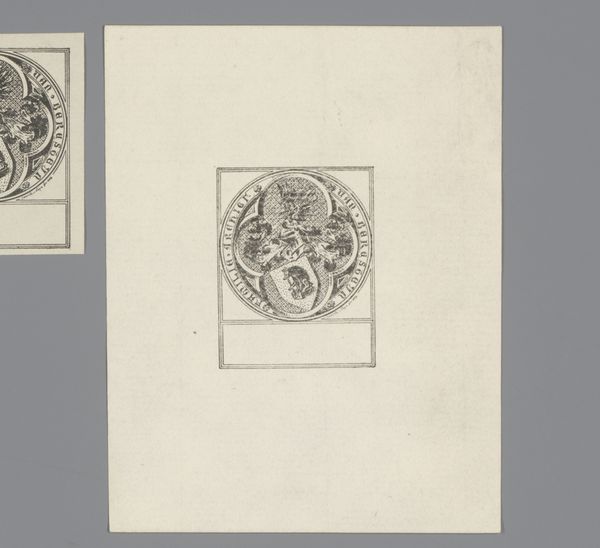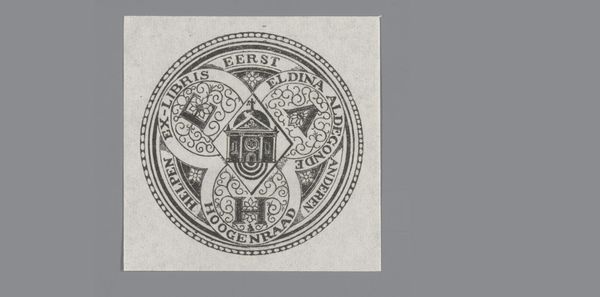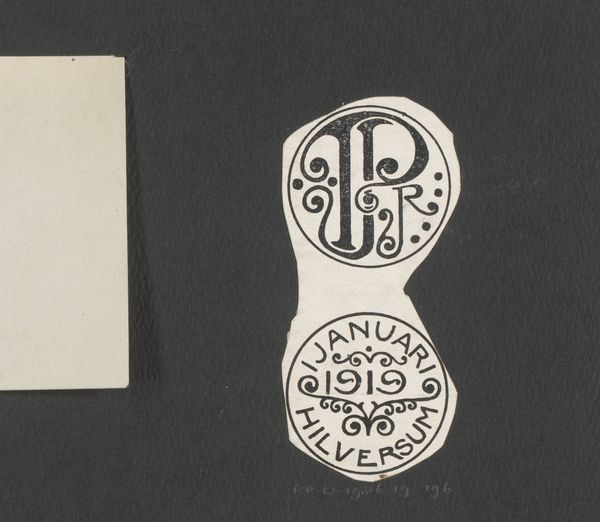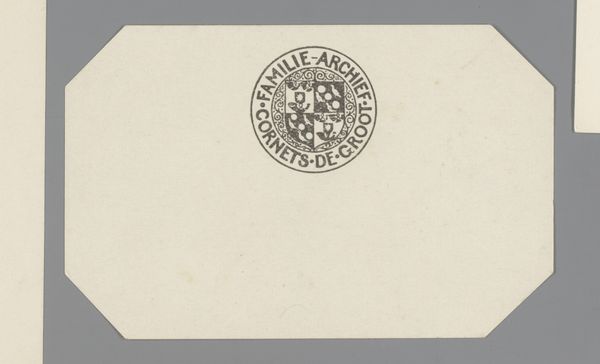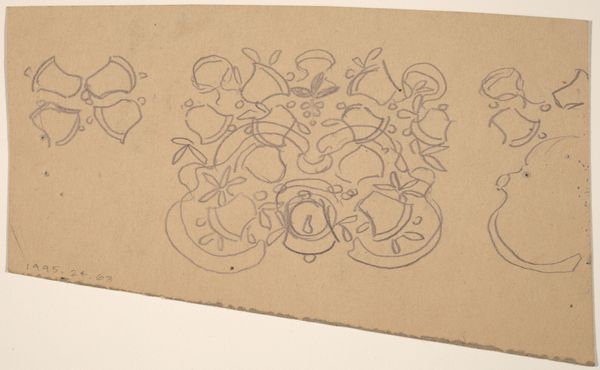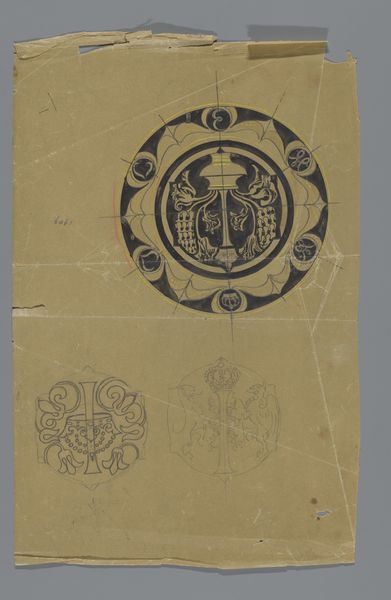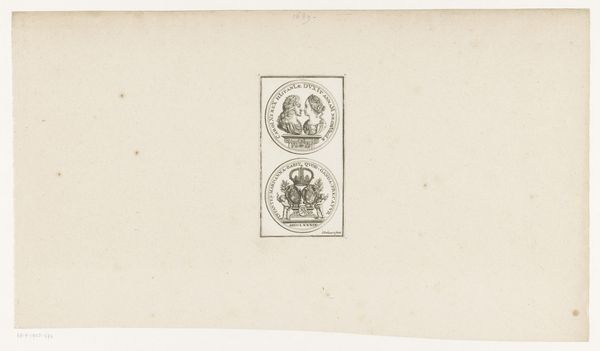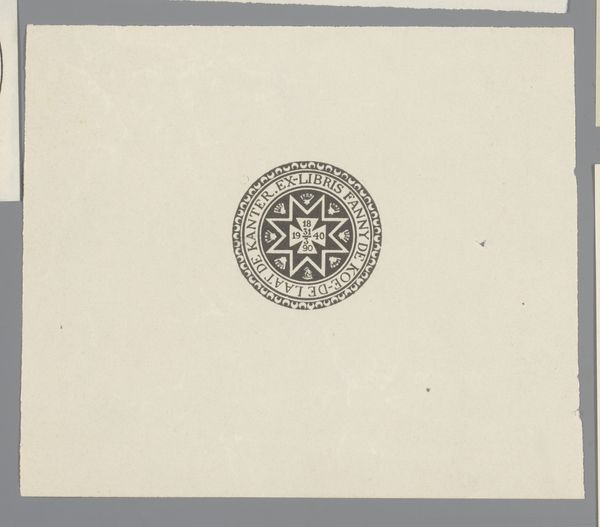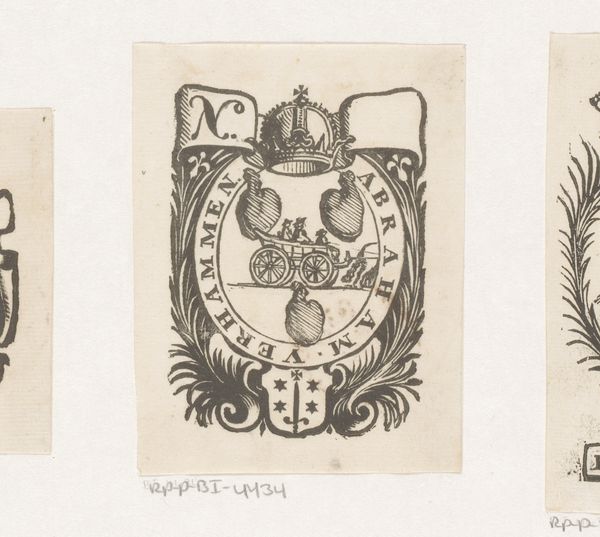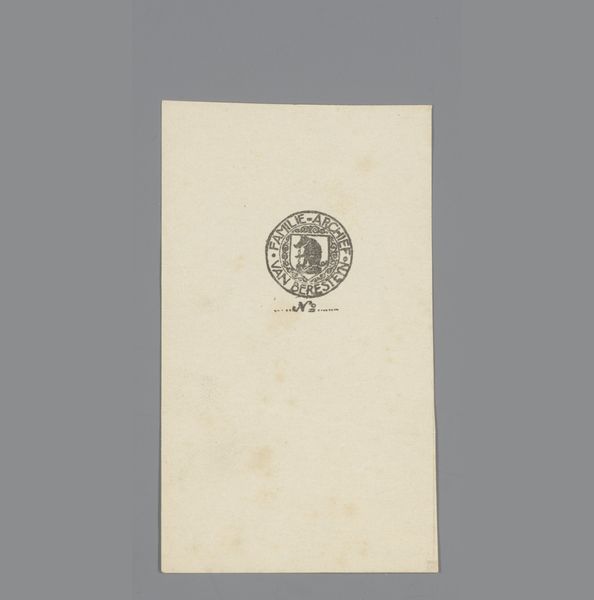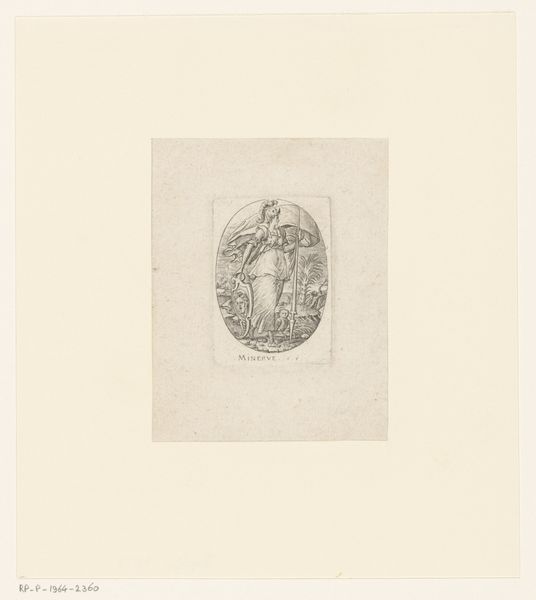
graphic-art, print, engraving
#
graphic-art
# print
#
geometric
#
line
#
engraving
Dimensions: height 40 mm, width 40 mm
Copyright: Rijks Museum: Open Domain
Curator: Welcome. Before us is a bookplate—"Ex libris van Hetty S.M.J.C. Cornets de Groot"—created sometime between 1886 and 1948. It’s an engraving, so rendered with sharp lines, and given its purpose, undoubtedly small in scale. Editor: It’s like a tiny heraldic puzzle! So dense with symbolism and tightly arranged; it creates a feeling of constrained elegance. I imagine it adhered inside the cover of some treasured volume. Curator: Indeed. Notice the strong symmetry first—a kind of radial balance spinning out from the central coat of arms. The line work is impeccable, defining the shapes clearly and concisely. The entire design is cleverly contained within a quatrefoil, like a stylized four-leaf clover. Editor: That central heraldic shield immediately draws the eye. Above it, there is what appears to be a crown; beneath the shield, something serpent-like...The words "Hora Ruit" give it the air of a family crest with motto meant to deliver both authority and a coded message. I want to decipher it all! Curator: Observe how the surrounding text reinforces the geometric design. “Ex Libris” mirrors “De Groot” and “Hetty S.M.J.C. Cornets” balances it across the top, all conforming to the containing shape. There's a wonderful interplay between positive and negative space. Editor: The personal nature of a bookplate—to stake a claim on knowledge—is what I find so captivating. This image of intertwined personal history with those abstract claims on higher knowledge would personalize the owner's whole library. It's all incredibly powerful to the owner of such treasures. Curator: Precisely. By focusing on form, composition, and technique, we can better appreciate the refined nature of such small, printed art. It also shows us the evolution of graphic art to convey information. Editor: Yes! The piece allows us to peer into Hetty’s world. Symbols of lineage and knowledge offer hints about social standing and personal values in past worlds. Curator: It's a fascinating look into how printed imagery and language work to inform its users—and how that practice impacts all fields, up to the modern day. Editor: Exactly. Visual culture echoes and evolves. That this "Ex Libris" allows to witness just a snippet of that makes it beautiful to me.
Comments
No comments
Be the first to comment and join the conversation on the ultimate creative platform.

